Understanding the Future and Basics of Creative Analytics in Gaming Apps
“Creativity is intelligence having fun.” - Albert Einstein.
This quote from Albert Einstein is especially relevant to the gaming industry today. Combining creativity and data results in impactful, user-focused ad campaigns fosters growth.
In fact, research indicates that around 30% of a brand campaign's success stems from media placements, while a significant 70% is attributed to creativity, as noted by AdAge. The essential message? Creative freedom is crucial for effective campaigns, and creative analytics is the driving force behind them.
In this blog, we’ll explore the basics of creative analytics, its benefits, data sources, challenges, and practical applications. If you manage marketing analytics for gaming apps, oversee ad performance, or analyze user engagement, you’ll find actionable insights here to optimize ad creatives and improve player retention.
What Is Creative Analytics?
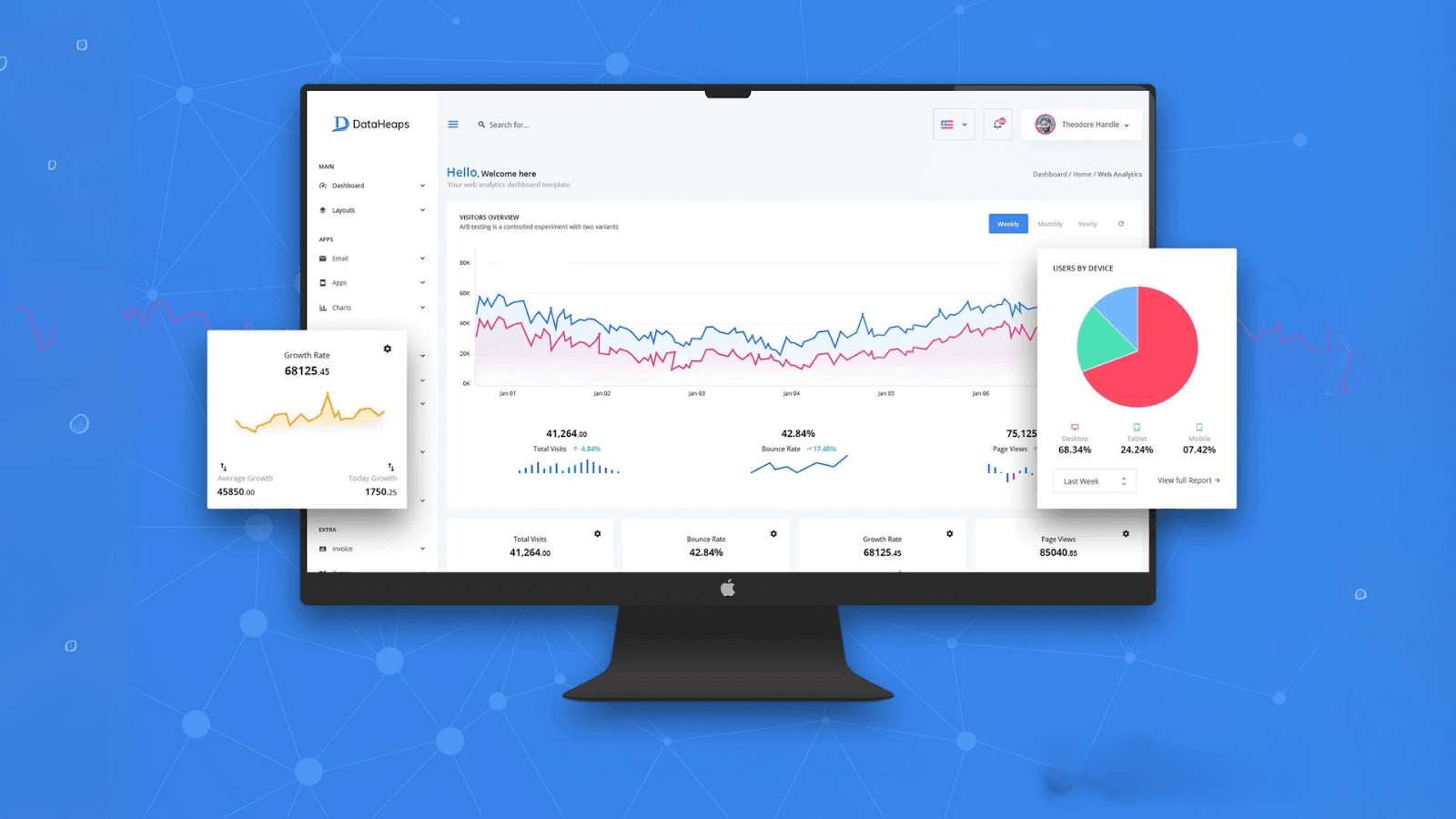
Creative analytics is the process of using data to refine and optimize every element of your marketing campaigns. This includes analyzing ad copy, visuals, targeting, and landing pages to ensure they align with your audience’s preferences.
Creative analytics helps you craft campaigns that resonate and perform by integrating data-driven insights with systematic strategies.
Understanding how this process functions is key to applying it effectively. Here’s how creative analytics works.
How Creative Analytics Works?
Creative analytics focuses on understanding which aspects of your campaign engage your audience and which do not. By using techniques such as A/B testing, monitoring marketing data, and continuous optimization, you can make informed decisions to enhance campaign performance.
While this process sounds promising, its benefits make it truly valuable. Let’s explore how creative analytics can transform gaming app campaigns.
Benefits of Creative Analytics for Gaming Apps
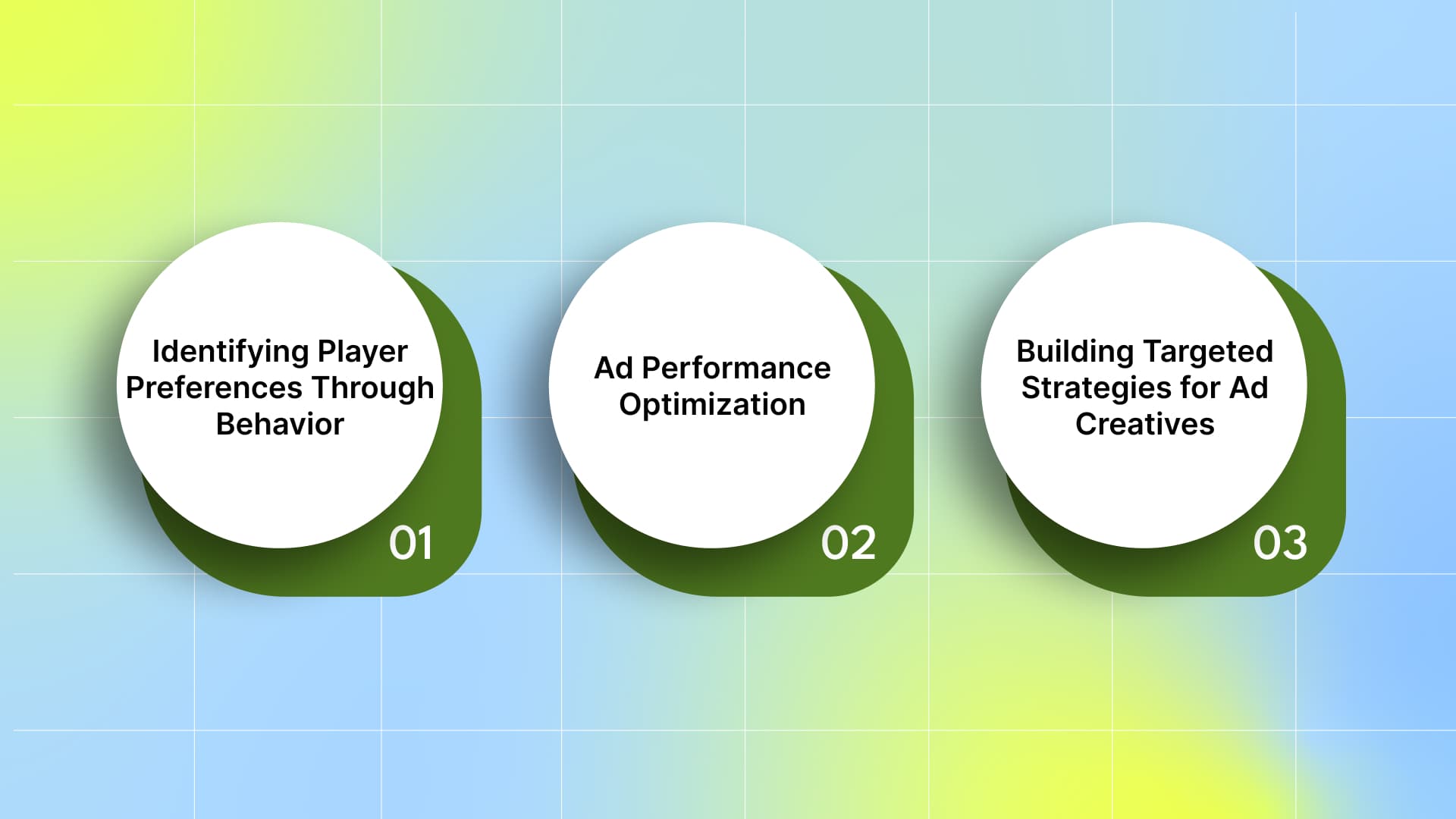
Creative analytics may be complex, but it pays off. Studios that commit to this effort unlock valuable insights that lead to greater engagement and tangible results:
1. Identifying Player Preferences Through Behavior
Creative analytics analyzes in-app interactions and ad engagement to help you discover what themes, visuals, and messaging resonate with your players.
For instance, data might show that players of role-playing games (RPGs) engage more with ads that highlight epic storylines rather than fast-paced combat. This insight allows you to tailor your ad creatives to highlight narrative elements, drawing in users who value immersive experiences.
2. Optimizing Ad Performance with Data-Driven Adjustments
Analyzing performance metrics such as click-through rates (CTR) and conversion rates can help you refine specific creative elements.
For example, if your analytics reveal that multiplayer gameplay ads have a higher CTR, you can shift your focus to visuals and messaging that highlight team-based experiences. This adjustment ensures you align your campaigns with user preferences for maximum impact.
3. Building Targeted Strategies for Ad Creatives
When you combine insights from player behavior and ad performance, you can develop ad creative strategies that cater directly to your audience.
For example, a puzzle game might discover through analytics that its most engaged players are competitive and enjoy timed challenges. Based on this insight, you can create ads with messaging like “Beat the clock and climb the leaderboard!” while showcasing game highlights that appeal to competitive users. This approach attracts new users and reinforces loyalty among existing players.
With these benefits in mind, understanding the tools and methods for data collection is the next step in unlocking the full potential of creative analytics.
Essential Tools for User Acquisition in Mobile Gaming
User acquisition (UA) in mobile gaming requires the right tools to scale campaigns and measure success. Ad networks and Mobile Measurement Partners (MMPs) are key to reaching the right players and optimizing performance. Here’s a quick look at the tools commonly used in UA for gaming apps and how they help developers optimize campaigns for maximum ROI.:
Ad Networks
Ad networks connect game developers with the right advertising platforms to promote their games, enabling targeted outreach to potential players and maximizing campaign efficiency.
Google Ads: Automates campaign management across Google's vast network, including search, YouTube, and Google Play, and offers highly optimized targeting.
Facebook Ads: A powerful platform for targeting gamers across Facebook, Instagram, Messenger, and Audience Network, enabling in-depth analytics to refine ad performance.
Applovin: A multi-platform ad network offering formats like rewarded and playable ads, optimized with user-level data to maximize engagement.
Mintegral: An AI-driven programmatic network providing high-quality traffic with formats like rewarded and interstitial ads via 10,000+ publisher integrations.
Vungle & AdColony: Specialize in high-quality video ads, including interactive formats and rewarded videos, both known for strong engagement and monetization.
MMPs (Mobile Measurement Partners)
Once ad networks help deliver your campaigns to the right audience, MMPs step in to ensure you can consolidate your data and accurately measure performance, track user journeys, and prevent fraud. Some of the most commonly used MMPs are:
Adjust Offers attribution and fraud prevention, helping developers track the full user journey and optimize UA campaigns in real-time.
AppsFlyer: Known for providing detailed insights into multi-channel UA efforts, allowing developers to optimize spending and performance.
Branch: Specializes in deep linking and cross-platform attribution, ensuring seamless user journeys from ad click to app install.
Kochava & Singular: These MMPs offer advanced tracking and attribution tools, giving developers actionable insights into user behavior and campaign effectiveness.
Together, these tools help game developers run effective campaigns, optimize ad spending, and ensure the best ROI for their user acquisition efforts. Now, let’s learn how to build a strategy for creative analytics.
Also Read: Using Data-Driven Insights to Adjust Monetization Tactics in Mobile Games
Building Systems for Creative Analytics
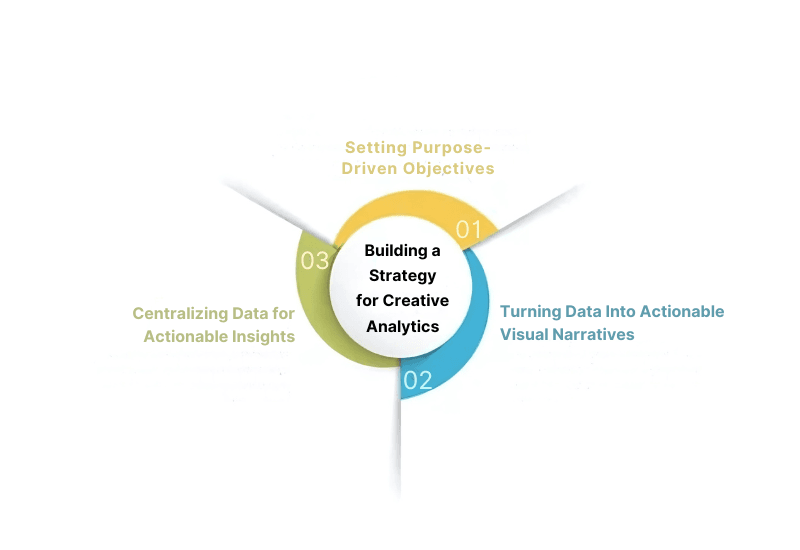
To effectively acquire users for your mobile game, focus on these key systems:
Set Clear Goals and Metrics: Determine what you aim to achieve—increasing installs, enhancing in-game engagement, or boosting lifetime value (LTV). Establish specific metrics like cost-per-install (CPI), return on ad spend (ROAS), or retention rates to track your progress.
Gather Relevant Data: Collect detailed information about your campaigns, including user demographics, behavior patterns, ad interaction rates, and in-game activities. Use tracking tools, such as attribution platforms, to capture comprehensive data across various touchpoints.
Analyze Past Campaigns: Review previous campaigns to identify trends and areas for improvement. This analysis will help you understand which creative assets, messaging, or channels attract and retain users most effectively. Additionally, conduct competitor research to analyze their successful strategies, ad formats, and creative elements in the same game category.
Experiment and Test: Continuously conduct A/B tests with different ad formats, visuals, copy, and calls to action to determine what resonates best with your audience segments. This iterative approach allows you to refine your strategy based on real-world feedback.
Leverage AI and Automation: Implement AI-driven algorithms to personalize ad creatives based on user preferences and behaviors. Automation tools can streamline campaign management, optimize bidding strategies, and scale efforts across multiple channels, enhancing efficiency and effectiveness.
Incorporate Feedback Loops: Actively seek feedback from users and internal teams to refine your campaigns. Monitor user interactions and gather insights through surveys, reviews, or direct feedback to adjust your messaging and creative strategies in real-time.
Optimize in Real-Time: Use data insights to make adjustments to your campaigns, such as modifying creatives, adjusting budgets, or changing targeting parameters. This agile approach ensures that you're continuously improving the user experience and maximizing the effectiveness of your ad spend.
Blend Creativity with Data: Combine creative ad designs with robust data insights to craft engaging and effective campaigns. Design visuals and copy that reflect user interests and behaviors, leading to higher engagement and conversion rates.
Align with Broader Strategies: Ensure your user acquisition campaigns are consistent with your overall marketing and business strategies. This alignment guarantees that all efforts are driving toward common objectives, such as scaling your user base or enhancing in-game monetization.
Measure and Iterate: Regularly assess your campaigns against the defined objectives. Use this data to refine and improve your strategy over time, fostering sustained growth and user acquisition success.
By implementing these strategies, you can develop a comprehensive and effective approach to user acquisition in the mobile gaming industry.
Now, let’s explore the key metrics to track for creative analytics.
Key Metrics to Track for Creative Analytics
When creating ad campaigns to attract new players, it’s important to measure the right metrics to understand how well your creative efforts are performing. Here are the key performance indicators (KPIs) game studios should focus on:
1. Impressions
This tells you how many times your ad was shown on a screen. It helps you check if your creative content is reaching enough potential players.
2. Conversion Rate (CVR)
CVR measures how many people take the action you want—like signing up or downloading the game—after seeing your ad. A higher CVR means your ad is doing a good job convincing people to take the next step.
Note: CVR is different from CTR (click-through rate). CTR shows how many people clicked on your ad, while CVR shows how many completed the action.
3. Average Watch Time
This metric tracks how long people watch your video ads. If viewers are staying longer, it means your ad is interesting and keeps their attention.
4. 3-Second Video Viewers Ratio
This measures the percentage of viewers who watch your video for at least three seconds compared to the total impressions. A higher ratio means your ad is catching people’s attention quickly.
5. Cost per Acquisition (CPA) and Cost per Conversion (CPC)
Both CPA and CPC measure the efficiency of your ad spend in relation to user acquisition but with a slight difference in focus. CPA shows how much you spend to acquire each new player, while CPC focuses on the cost of specific actions, such as a game download or in-app purchase. Together, these metrics help ensure you're spending wisely and achieving cost-effective results for both broad and specific goals.
7. Ad Spend
This is the total amount you’ve spent on your ads. Keeping track of this helps you stick to your budget and make better spending decisions.
8. Return on Ad Spend (ROAS)
ROAS measures the revenue generated by your ads relative to the amount spent. It provides a quick snapshot of whether your campaigns are generating enough revenue to justify the investment.
9. Return on Investment (ROI)
ROI looks at the bigger picture, comparing the profit your campaigns generate against the total cost. While ROAS focuses on revenue, ROI helps you understand if your campaigns are truly profitable.
Tracking these KPIs helps ensure your ad creatives attract players, refine strategies, and grow your user base. Let’s look at practical examples to see how these strategies drive impactful gaming campaigns.
Now, Let’s delve into those challenges and how to overcome them.
Challenges in Creative Analytics for Gaming
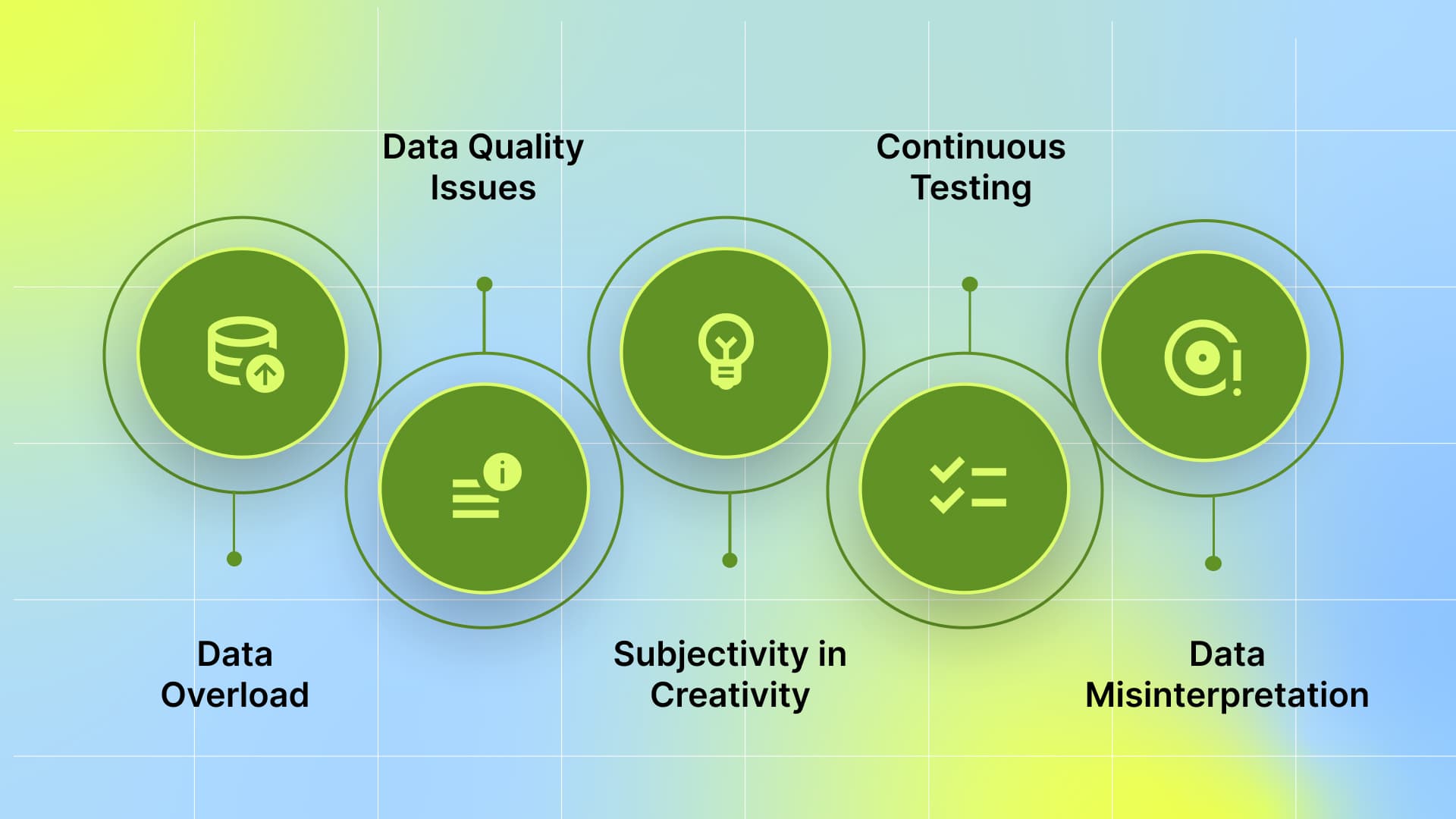
Creative analytics in gaming presents distinct challenges that can significantly influence user acquisition strategies. Here are some key obstacles to consider:
Data Overload
Gaming campaigns generate numerous metrics, like cost per result, click-through rate, and impressions. To avoid overwhelm, focus on the metrics that align with your campaign goals. For a brand awareness campaign, prioritize reach and impressions over conversion rate.Data Quality Issues
Bad data can skew results. Common causes include human error, irrelevant data collection, and technical tracking issues. Ensure data quality by auditing regularly and investing in reliable tracking tools.Subjectivity in Creativity
While data guides creative decisions, creative elements (e.g., color scheme, messaging) are subjective and may evoke different reactions. Use data to inform, not dictate, creative choices. Test and refine elements to find what works best.Continuous Testing
Creative assets may not perform the same across campaigns. Market trends and consumer preferences change, so keep testing and optimizing creative elements—small tweaks like font or color can significantly impact response rates.Data Misinterpretation
Numbers can mislead. Don’t mistake correlation for causation. For example, a spike in traffic after an ad launch may also be influenced by external factors like market trends or algorithm updates. Always consider these variables when analyzing data.
While creative analytics provide valuable insights, understanding and addressing these challenges will ensure that data works for your gaming campaigns, not against them.
Practical Applications in Gaming
Explore how creative analytics can transform your gaming campaigns with these actionable strategies:
Execution Ideas for Using Analytics Insights
Replicate Success: Analyze ad performance data to pinpoint the most successful elements, such as visuals, taglines, or gameplay clips. Leverage these winning elements across multiple campaigns to ensure consistent results and maximize their impact.
Combat Creative Fatigue: Monitor ad performance metrics like click-through rates (CTR) and cost-per-install (CPI). If you observe a decline, proactively refresh your ad creatives with new visuals, messaging, or gameplay footage to maintain audience interest.
A/B Test for Optimization: Conduct A/B tests on key ad components, including colors, character designs, and call-to-actions (CTAs). Analyze the results to identify the combinations that drive the highest engagement and optimize your campaigns accordingly.
Driving Better Gaming Content and Promotions
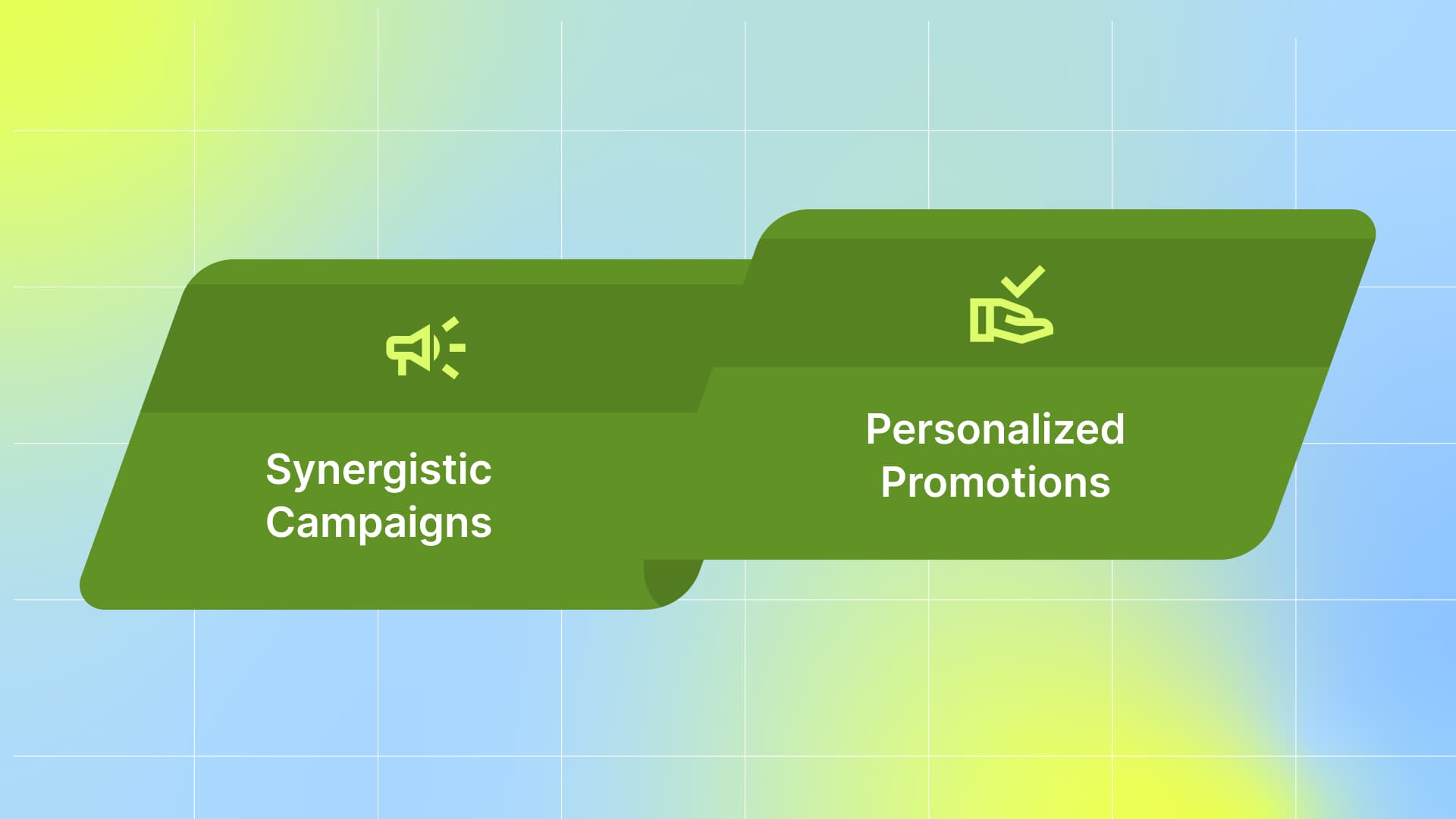
Analytics can significantly enhance in-game promotions and features:
Synergistic Campaigns: Align in-game rewards, such as double XP weekends or exclusive items, with your ad campaigns to incentivize installs and drive deeper player engagement. For example, Pokémon Go's Community Day events demonstrate the power of synergistic campaigns in mobile gaming. These monthly events encourage deeper playerengagement by offering exclusive bonuses, such as higher spawn rates for specific Pokémon and the chance to catch rare Pokémon that are typically hard to find.
Personalized Promotions: Use player behavior insights to craft ad messages and offers that resonate with specific audience segments. Incorporate seasonal themes, like holiday-themed creatives, to align with trends and boost player engagement, excitement, and participation.
By effectively leveraging the power of creative analytics, game developers can create more engaging and effective ad campaigns, drive higher player acquisition and retention, and ultimately achieve greater success in the competitive gaming market.
Conclusion
Understanding your audience is key to creating gaming ad campaigns that truly connect. Creative analytics helps you do just that by combining data-driven insights with creative strategies to refine your campaigns.
Now, we know how analyzing player preferences, optimizing ad creatives, and using centralized data systems can improve user acquisition, engagement, and retention while tackling challenges like data overload and creative misalignment.
Segwise makes creative analytics simple and impactful. With AI-driven creative insights, you can easily create high-performing ads, tag creative elements like visuals and text, and even customize tags to track what matters most. Stay ahead with custom dashboards that show top-performing assets and winning combinations across platforms.
Segwise helps you spot what’s working, catch creative fatigue early, and optimize budgets effortlessly. Plus, it integrates seamlessly with tools like Google Ads, Adjust, and AppsFlyer—no coding needed. It’s everything you need to run smarter, more engaging campaigns.
Start your journey to data-backed, impactful campaigns with Segwise's 14-day free trial today!
